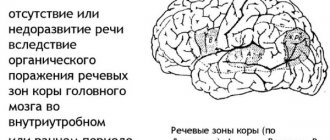auditory dictations in speech therapy for grades 1-7
Starlings (S-C)
It was mid-March. Spring this year turned out to be smooth and friendly. Occasionally there were heavy but short rains.
We were looking forward to the starlings flying into our garden. Starlings are cute, cheerful, sociable birds, the first migratory guests, joyful heralds of spring. (40 words)
Spring (C-C)
So winter has come to an end. Somehow everything changed immediately. The wind drove in low clouds. They covered the entire sky, and suddenly the first rain fell on the ground. And then the clouds parted, the sun appeared and warmed the earth.
Tits were the first to mark the beginning of spring. They quickly flew from branch to branch, looking for bugs and worms in the folds of the bark. (52 words)
Birds (C—C)
In one village there were many gardens. Birds sang loudly in them. In autumn there were a lot of apples in the orchards.
But one day, mischievous boys destroyed the birds’ nests. And the birds flew away.
Spring came. The garden was quiet without birds. Harmful worms have spread and eaten the flowers and leaves. In the fall there were no apples in the orchards. (52 words)
Resourcefulness (C-C)
One day a shepherd was tending a large flock of sheep in the mountains. A collapse occurred and blocked the path of the sheep. Then the shepherd tied a note to the dog's collar and sent the shepherd home. People saw the dog, read the note and rushed to help. The sheep were saved.
It is rightly said that a dog is man's friend. (44 words)
Evil stepmother (C—C)
It was winter. It was January. There was a lot of snow. The trees in the forest stood waist-deep in snowdrifts. People sat in their houses and lit the stoves.
At such a time, in the evening, the evil stepmother ordered her stepdaughter to go into the forest for snowdrops. The girl began to cry, wrapped herself in a torn scarf and went into the forest. (49 words)
Insects (C—C)
Flies, beetles, dragonflies and butterflies are insects. A butterfly lays eggs. A caterpillar emerges from the egg. The caterpillar will turn into a chrysalis, and the chrysalis will turn into a butterfly.
Butterflies are beautiful, but their caterpillars are harmful. Caterpillars eat leaves and buds on trees. (35 words)
New town Chulak (C-C)
All around lay the waterless steppe. Wells with bitter water were rarely found in it. Even sheep don’t drink this kind of water.
But then builders came to this region. They extracted clear, tasty water from the depths of the earth and began to build houses. A lot of work began in Chulak. Now the streets in the city are straight and wide. And along the banks of the rivers there is the green noise of trees. (56 words)
In spring in the grove (CH—SH)
It was a warm sunny day. The kids went to the birch grove. The girls are looking for lilies of the valley and sorrel. The boys found a hedgehog in the bushes. The guys wandered in the forest for a long time. They returned home late in the evening. (32 words)
Summer morning (Whistling - hissing)
A wonderful morning has arrived. A warm spring breeze was blowing. A clear, fast stream gurgled in the ravine. Swallows were chasing insects. The ringing song of a lark was heard. The bright sun was rising across the sky. (28 words)
The concept of dysgraphia as a disorder of written speech
What is dysgraphia?
In one of the previous articles we discussed the topic of dyslexia. It was also said there that these are similar developmental disorders, and they almost always overlap, but do not always accompany each other. In Russia, while receiving primary education, more than thirty percent of primary school students have this deviation, so the disorder is common and it is very important to learn to recognize it, understand its causes and know ways to overcome such a problem.
Dysgraphia is a written language disorder in which obvious errors are made when writing and which requires speech therapy correction.
Like dyslexia, dysgraphia has several forms, each of which has its own characteristics, and, more precisely, its own examples of errors made by children. The following forms of dysgraphia can be distinguished:
- Acoustic
- Articulatory-acoustic
- Optical
- Ungrammatical
- Dysgraphia associated with non-perception of language analysis and synthesis
Causes of impairment of writing and speech reproduction of information
Why does a child write poorly or why does a child read poorly? Not surprisingly, the causes of dysgraphia are similar to the causes of dyslexia.
- Hereditary predisposition
- Diseases suffered during the perinatal period of development, as well as various complicating factors (bad habits of the mother, complicated toxicosis, asphyxia, short interval between the mother’s pregnancies, and so on)
- Internal functional reasons (long-term somatic diseases, etc.)
- External functional reasons (improper speech education)
- Lack of school readiness for writing
- Minimal brain dysfunction
- Impaired mental function
- Attention Deficit Hyperactivity Disorder
- General speech underdevelopment
- Impaired pronunciation of speech (dysarthria)
- Strokes, traumatic brain injuries, neurosurgery and brain tumors (possibly in adulthood)
Dysgraphia, like dyslexia, can lead to many problems. Among them are a drop in educational motivation, underdevelopment of speech, school failure, undeservedly poor performance, and so on. Therefore, it is very important to realize that it is not the child’s fault that he writes incorrectly, and this problem is not related to his schooling.
Responsibility for correcting the violation lies, of course, with specialists, but first of all, with parents!
As well as the process of development of their pet as a whole. All that is required of teachers is to recognize the violation in time and provide conditions in the classroom that promote the harmonious development of children, including the correction of dysgraphia.
But is it possible to confuse dysgraphia and other developmental disorders?
How not to do this?
Symptoms of dysgraphia in a child
Phonemic perception
This form of written language impairment involves the presence of poor phonemic awareness. When practicing writing, one replaces some with other letters that denote similar sounds. For example, replacing paired consonants “b” / “p”, “d” / “t”, “g” / “k”, consonant vowels “o” / “u”, “e” / “yu” or complex sounds and their components “a” / “i”, “ts” / “s”, “ts” / “t”, “h” / “shch” and so on.
In case of acoustic dysgraphia there are no problems with hearing and oral speech
.
Errors in pronunciation of sounds
In this case, the symptoms described above remain, only errors in the pronunciation of sounds are added to acoustic dysgraphia. In fact, this is a combination of acoustic and phonemic dyslexia. The child reads and writes words incorrectly and confuses similar sounds.
Articulatory-acoustic and articulatory disorders occur in children with phonetic-phonemic speech disorders.
Agrammatic speech disorder
There are difficulties in pronouncing text that has been read and is due to unformed speech. The student writes and pronounces without fully realizing syllabic perception and the meaning of the formation of words. It is difficult for him to find synonyms or antonyms, to describe something correctly, or to form the necessary form of a word (for example, a diminutive or plural). There may also be difficulties in constructing complex sentences (for example, he omits one or another member of a grammatical sentence or violates the rules of their sequence). Agrammatic dysgraphia is often found in bilingual families.
Optical dysgraphia of writing
In this case, the child's brain confuses visually similar letters. He can add or remove elements of letters, as a result of the formation of words, both existing and non-existent signs are obtained. For example, you can confuse “X” and “F”, “A” and “L”, and from the letter “E” you can make “S” in reverse. Also, sometimes with optical dysgraphia, letters are mirrored.
Underdevelopment of language analysis and synthesis
Despite the complex name, this type of dysgraphia is quite simple to identify. A student suffering from it, in the process of writing, misses letters or syllables, changes their places, duplicates or even adds something that is not there. Also, a student may confuse in written work where a space is needed and where not, or not complete words. There are also difficulties in defining the boundaries of the proposal.
Exercises to correct dysgraphia at home
Is it possible to correct and how to correct dysgraphia at home? Yes, after consultation with a speech therapist and his analysis of the situation, the main burden falls on doing the exercises at home. Below are exercises for correction. You can apply them and practice them yourself. This way you will not only help the correction, but also get closer to your baby.
"Labyrinth"
You need to go through the labyrinth by drawing a continuous line on a piece of paper without lifting your hand or turning the labyrinth.
Graphic dictations
These are tasks in which you need to draw something on a checkered sheet of paper based on prompts. There are graphic dictations in which a letter or number must be obtained.
Construction of signs from elements
You can make letters and numbers from different objects: counting sticks, pencils, cereals, plasticine, and so on. You can draw drawings on paper in the form of signs. From already composed symbols, you can recompose them. Take them apart and put them back together.
Schulte tables
Schulte tables, the Munstenberg technique and other psychological methods for developing attention related to numbers. According to psychologists, this is especially effective when the child is between 10 and 11 years old.
Crosswords
Scanwords, crosswords, English crosswords, Sudoku and other puzzles.
Recognizing incomplete notations
Play recognizing letters and numbers that are not fully drawn. Let the child add the part of the sign that is missing. Some designs can be continued into several different symbols. For example, the letter “B” and the number “5” have a common part.
Finding missing letters in a word
Write a word and deliberately leave out a letter or even a syllable. Let the student analyze the word, find gaps, highlight the syllable, correct the mistake and name the correct spelling.
Memorizing poems
This is also a kind of exercise that develops memory and speech. In our case, poetry will help us gain a sense of rhythm in speech.
Play with words
Make anagrams: rearrange letters and syllables in words so that they form new words or phrases. You can also take some medium or large word and try to make words from the letters in it. There are a lot of similar techniques.
Development of fine motor skills
It seems that everyone around is already repeating this: the development of speech is associated with fine motor skills. Make the most of this opportunity: let the child’s psyche take a break from the Russian language, and let him take up modeling, beads, construction sets, origami and other interesting activities. Turn on your imagination - and you will succeed. In addition, it will be extremely interesting for both you and the child!
Psychological comfort when writing
You must provide your pupil, first of all, with psychological comfort, because without it the problem will either not be solved, or will be solved, but with consequences of a different nature. Fear of the teacher, hatred of writing and lessons, shame in front of classmates and more.
- Talk to teachers. Explain the seriousness of the situation and ask them to behave competently. Let them not focus the attention of other children on the problem and be patient. The teacher's duty is to treat his student with understanding. This means helping, stopping the ridicule of others and not scolding for mistakes. A teacher who does not understand this can not only interfere with the correction of dysgraphia, but also lead the student to nervous overstrain. Just imagine the situation. You are a small child of 8 years old who cannot do what all girls and boys do with ease. At the same time, an adult, a teacher with whom you often have contact, scolds you for writing mistakes, and meanwhile your peers ridicule them. And this continues for quite a long time, day after day. I think it is obvious that the little person will have neither educational motivation, nor trust in others, nor healthy self-esteem.
- Charge your child only with positive energy. Praise your child for successes more often and do not talk about bad things. It is very important that he believes in himself and does not give up, that is, does not stop doing writing exercises just because he is tired or something does not work out. At the same time, do not force him to overwork: everything should be in moderation. Otherwise, breakdowns cannot be avoided. Remember that parents are the most important thing your son or daughter has. They are his best friends and the closest people in his life. Who, if not you, will support your child in achieving success?
Work on dysgraphia correction with a speech therapist
Any doctor will tell you that self-medication is unacceptable, and this is true.
Basically, a speech therapist works with dysgraphia, but a neuropsychologist, a psychotherapist, and an educational psychologist can also work.
You should prepare for the fact that the process of eliminating speech and writing disorders will not be quick. The correction program is built depending on the causes, type of violation and age characteristics. The older he is, the more difficult it is to carry out the correction.
Cases when medication or physiotherapeutic treatment is necessary
If there is an organic cause of dysgraphia, then its treatment will be prescribed (medication, physiotherapy, and so on). Similar methods of treatment are prescribed for aggravated disorganization of written speech, leading to the impossibility of writing (Agraphia). Various exercises will be carried out with a speech therapist. You can apply some of them yourself and work with your child at home, in this way you will not only help with the correction, but also get closer to your baby.
Diagnosis of dysgraphia disorder by a speech therapist
Unfortunately, you will not be able to make a diagnosis and therefore contact a medical center. It is necessary to carry out a process of speech analysis of written grammar. You will have to undergo diagnostics and examination by a number of specialists, among them: a neurologist, an ophthalmologist, an otolaryngologist, a speech therapist and a psychoneurologist (the latter, in fact, make the final diagnosis). Each of the doctors checks whether the subject has any health problems that could lead to a disruption in the writing process, in addition to dysgraphia. Let's assume that the diagnosis has already been made. The main question that faces us now is how to deal with dysgraphia in a child?






